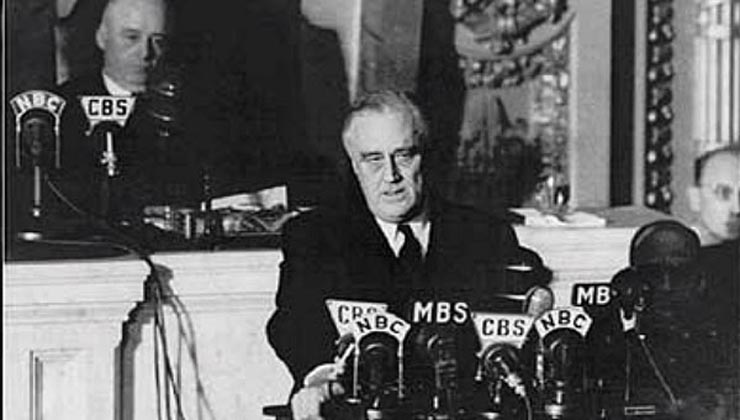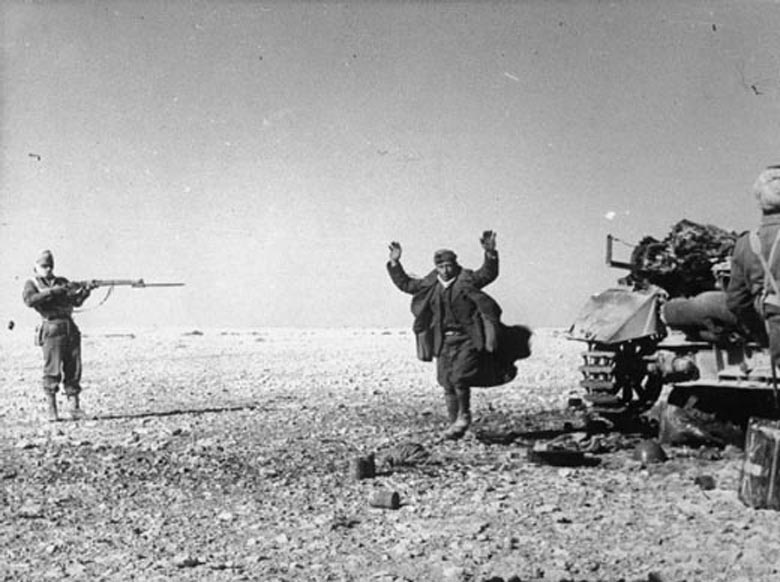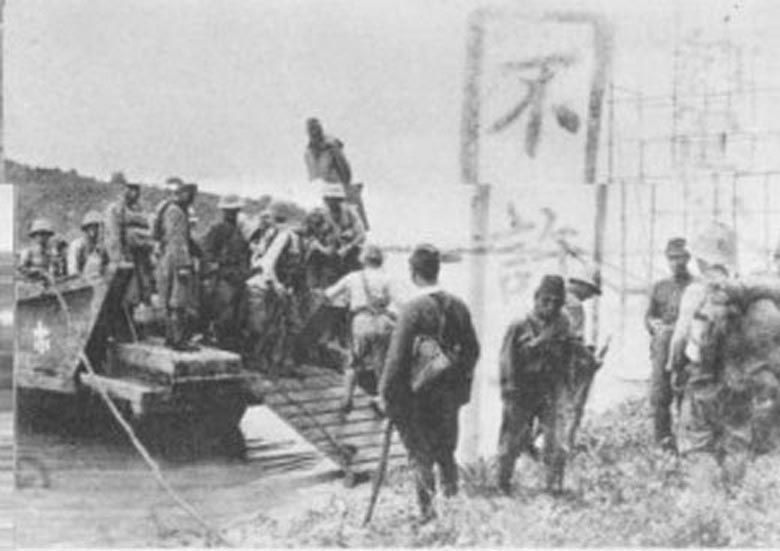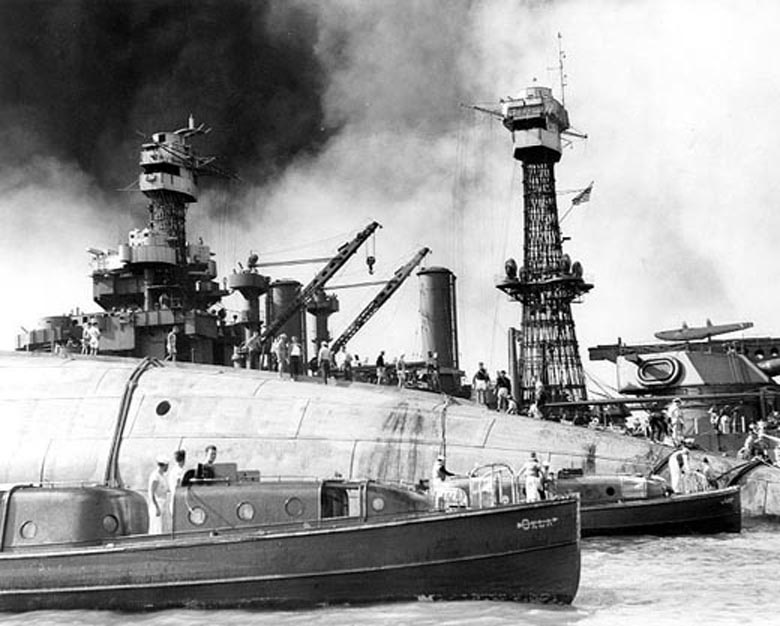Air Operations, Pacific
In widely scattered operations, Japanese aircraft bomb targets at Guam, Wake, Hong Kong, Singapore and the Philippine Islands. Extensive damage is inflicted on US Army aircraft at Clark Field, Luzon. A horizontal bomber sinks the minesweeper Penguin (AM-33) at Guam in the Marianas.
[Axis Diplomacy
Japan requests that Germany declare war on the US.
[Battle of the Atlantic
The British steamer Fireglow (1261t) sinks on a mine 3 miles south of the Dudgeon Buoy with the loss of 1 crewman.
[Diplomatic Relations
The United States and Britain declare war on Japan. In his address to Congress Pres Roosevelt describes the events at Pearl Harbor as forming part of 'a date which will live in infamy'. Roosevelt does not ask Congress to declare war on Germany and Italy. Australia, Canada, New Zealand, the Netherlands, the Free French, Yugoslavia, the Dominican Republic, El Salvador, Guatemala, Haiti, Honduras and Panama all declare war on Japan also. Colombia breaks diplomatic relations with Japan. China declares war on Germany, Italy and Japan.
'Day of Infamy' Speech |
 |
Eastern Front
The Soviet counteroffensive in the Moscow sector continues to make considerable headway despite desperate German defense. The defensive line of the Germans runs form Orel to Rshev. The Soviets have breached this line on the left side which the Germans are unable to close. The line being held by the Germans, Vyazma-Orel-Kursk-Kharkov, is connected by a series of strongpoints known as 'boxes' which support one another.
The Red Army forces are advancing successfully in the Leningrad sector also. The German 16th Army withdraws from Tikhvin, along the metalled road between Leningrad and Vologda, which they had captured on November 8. The Germans barely avoid being encircled at great cost leaving behind vast amounts of supplies and retreat south in the direction of Volkhov. The II Army Corps of about 100,000 men is still cut off from the rest of the army. It is in the Demiansk area, southeast of Lake Ilmen, and will have to wait until April 28, 1942 before it can re-establish contact with the rest of the army. In the meantime it will be supplied by air.
NORTHERN SECTORThe German 18th Army is under severe pressure at Tikhvin and is on the verge of losing the town.
There is a blood bath in the Rumbula forest near Riga, Latvia where 27,000 Jews are shot.
CENTRAL SECTORThe 30th Army passes Klin in the north, and the 1st Shock Army is approaching the town. These moves threaten the 3rd Panzer Group. The Soviet 16th and 20th Armies continue to make steady gains, although to the south the 50th Army is held up before Tula by the 3rd Panzer and 296th Infantry Divs. The Soviet 3rd Army batters the German 2nd Army, and Soviet horsemen of the 55th Cavalry Div pour into the German rear.[MORE]
[Germany, Strategy
Hitler issues Directive No 39. As the Wehrmacht fights for its life on the Eastern Front, Hitler dictates that: 'The severe winter weather which has come surprisingly early in the East, and the consequent difficulties in bringing up supplies, compel us to abandon immediately all major offensive operations and to go over to the defensive. The way in which these defensive operations are to be carried out will be decided in accordance with the purpose which they are intended to serve, viz:
- '(a) To hold areas which are of great operational or economic importance to the enemy.
- '(b) To enable forces in the east to rest and recuperate as much as possible.
- '(c) Thus to establish conditions suitable for the resumption of large-scale offensive operations in 1942.'
In an oblique admission of the losses incurred in Russia, the directive ends with measures to supply fresh manpower to the Eastern Front: 'The replacement of personnel of the Armed Forces for 1942 must be ensured even in the event of heavy casualties. As the Class of 1922 will not be sufficient alone for this purpose, drastic steps are necessary.'
[Hong Kong
Supported by heavy artillery and aircraft the Japanese 38th Div begins an attack at 0800 hours local time. Gen Christopher M. Maltby commanding the garrison of British, Canadian and Indian troops has only 6 battalions and 28 guns with which to make a defense. His plan is to fall back from the border to a line across the neck of the Kowloon Peninsula known as the Gindrinkers Line and to try to hold out there for as long as he can. Delaying actions will be fought for the first 2 days to cover the retreat to this line.
[Malaya
Not long after midnight Japanese transports appear off Kota Bharu and landings begin. At 0415 hours there is a small bombing raid on Singapore by 17 Japanese bombers. The city is fully lit and at peace. 61 people are killed and 133 injured. By early morning the Japanese have also begun landings at Singora and Patani in Thailand. Units of the Japanese 5th Divsion land here while at Kota Bharu the troops are from 18th Division. Tank units are landed at Singora and Pitani also. The British have almost no tanks in Malaya. In Malaya the British have 3 divisions and numerous fortress troops but only 1 division is free for active operations against the Japanese, since the other units are guarding possible landing places or airfields. The British force is poorly trained and too dependent on movement with motor transport by road. Gen Arthur Percival is in command. The Indian III Corps commanded by Lt-Gen Sir Lewis Heath is responsible of all Malaya north of Johore and Malacca. He employs the Indian 9th Division against the enemy in the Kota Bharu area and sent the Indian 11th Division, already poised to move into Thailand, across the border to delay the enemy on roads to Singora and Patani. The Indian 9th Division, whose primary mission is to protect the three airfields in Kelantan (Kota Bharu, Gong Keday, and Machang), fights a losing battle for Kota Bharu, from which it starts withdrawing during the night. One Indian 11th Division column, driving toward Singora, engages a tank-supported force 10 miles north of the frontier. Another Japanese force, advancing toward Patani, is opposed only by Thai police forces. In conjunctin with ground attacks, Japanese planes strike repeatedly at airfields in northern Malaya and greatly reduce the strength of the RAF Far East Command. The RAF, after attacking enemy shipping and troops in the Kota Bharu area, withdraws from the Kelantan airfields to Kuantan, far to southern Singapore which is the ultimate objective of the Japanese 25th Army in Malaya. The RAF has 158 planes in Malaya when operations begin but many are lost on the first day.
At 1735 hours Adm Phillips sails with the battleships Prince of Wales and Repulse and 4 destroyers from Singapore. His intent is to intercept the Japanese forces thought to be about to land on Singapore. The Japanese have 2 battleships and 6 heavy cruisers covering their landings as well as many smaller ships. Adm Kondo is in command. The British air force can aid the naval squadron with reconnaissance but can offer no proper air cover.
The British have hoped to forestall Japanese landings at Singora and Patani by an advance into Thailand, but have not ordered this before the Japanese attack because such an advance into a neutral country could have upset opinion in the United States. Once the Japanese land it is too late to begin this plan and so a more limited alternative involving delaying actions at Jitra in northern Malaya and an advance into Thailand to a position known as The Ledge is ordered. There is delay in putting the plan into operation and more delay is imposed by the resistance of the Thai border guards who know nothing of events farther north. Thus by the end of the day the Japanese are well ashore at all 3 of their landing places and the British have been delayed in their counter moves and have lost heavily in the air.
[North Africa
The British forces in Libya re-take Sidi Rezegh and restore a supply corridor to Tobruk. In the 7 plus months since April the British Mediterranean Fleet has delivered 32,667 troops and 34,000 tons of supplies. 34,115 troops, 7,516 wounded nad 7,097 POWs have been evacuated. The Fleets losses: 1 cruiser/minelayer, 2 destroyers and 24 other vessels.
Rommel decides to give up attempts to stay in the fight around Tobruk. There are only about 40 tanks left in the German divisions and 90th Light is down to a strength equivalent to 2 battalions. The German retreat is well controlled and the whole force is back around Gazala on the 11th.
'Hurribombers' of 80 Squadron leave a mile of the coastal road covered with blazing German transports.
Indian Troops Capture Tank Crew |
 |
Pacific
- A small landing force intending to assault Wake Island leaves Kwajalein on the 8th, escorted by a cruiser and 6 destroyers under the command of Rear-Adm Kajioka Sadamichi.
- Seaplane tender William B. Preston (AVD-7) is attacked in Davao Gulf, Philippines, by planes from Japanese carrier Ryujo. The ship escapes, but 2 PBYs are destroyed on the water.
- Japanese floatplanes bomb Guam the minesweeper Penguin (AM-33) and miscellaneous auxiliary Robert L. Barnes (AG-27). Penguin is later scuttled by her crew in deep water.
- US passenger ship President Harrison heading to evacuate marines from North China is intentially run aground at Sha Wai Shan, China and is captured by the Japanese. It is repaired and refloated by the Japanese and renamed Kakko Maru and later, Kachidoki Maru.
Philippines
The Japanese, under the command of Gen Masaharu Homma, launch their operations against the Philippines which lie along their future supply line for oil which they wish to obtain from the East Indies. To defend the islands there are only 160 US aircraft, 35 of which are B-17 bombers, not very useful for defense. The Japanese offensive begins in the morning with air attacks and a landing on Bataan Island north of Luzon by a small force who soon overcome the tiny garrison and begin work on a airfield. The main air attacks come in at 12:55p.m., having been delayed by fog over the Japanese airfields in Formosa. Almost 200 aircraft are involved and they catch most of the defending aircraft on the ground and destroy about 100, leaving 17 B-17 bombers and less than 40 fighters in operating condition. 7 Japanese Zeros are shot down. There are also attacks by 22 planes from the carrier Ryujo against Davao on Mindanao causing considerable damage. The first of the Japanese landing forces bound for the Philippines leaves Palau. Gen MacArthur commands the 130,000 strong Allied force on the Philippines. About 20,000 of his men are American, the rest being from the Philippine army. They are comparatively poorly equipped and trained. Many are unavoidably dispersed to garrisons on the various islands. The largest units are on Luzon as part of either Wainwright's North Luzon Force or the smaller South Luzon Force or the smaller South Luzon Force led by Gen Parker. MacArthur has hoped to use his aircraft to delay and disrupt Japanese landings which he recognzes his ground forces are too weak to repel. He then plans to retreat into the Bataan Peninsula and to hold out there until help can be brought from the main forces of the Pacific Fleet. The losses at Pearl Harbor and his own losses in aircraft mean that neither part of this can work properly.
The American Asian fleet, under the command of Rear-Adm William A. Glassford, sails from Iloilo in the Philippines in the direction of Macassar Straits in the Dutch East Indies.
[Shanghai
The Japanese seize International Settlement at Shanghai. Many ships are sunk or captured in its harbor. The crew of the US gunboat Wake (PR-3), stranded in the port of Shanghai, fail in an attempt to scuttle their boat and surrender to the Japanese. As it turns out, Wake is the only US ship to surrender during the war. The Japanese occupy the whole of the city and capture the small US garrison in the American section. Japanese troops move toward Kowloong, on mainland across from Hong Kong.
Thailand
Some Japanese from Indochina cross into Thailand and drive on Bangkok against negligible resistance. Others land unopposed at Singora and Patami on the east coast and start southwest across the Kra Isthmus to assiste in the conquest of Malaya.
Japanese Troops Landing at Songkhla |
 |
United States, Home Front
An estimated 60 million Americans hear Roosevelt's call for a Congressional declarations of war against the Axis powers. The president's reference to the previous day as one 'that will live in infamy' is a clarion call to action, but recruiters are already straining to accommodate the volunteers already seeking to enlist. A thousand men are turned away by the navy in New York City due to lack of facilities.
False air raid alerts are sounded all across the United States. Three are sounded in San Francisco as 30 enemy planes are reported over the city. Lt-Gen John L. DeWitt, head of the Western Defense Command, say 'Death and destruction are likely to come to this city at any moment. These planes were over our community for a definite period. They were enemy planes. I mean Japanese planes. They were tracked out to sea. Why bombs were not dropped, I do not know.' Needless to say, these words add to the confusion and panic of ordinary citizens. There are no Japanese planes, of course, but the pattern for hysteria is set.
Rescue Crews on the Oklahoma |
 |
Wake Island
Japanese naval land attack planes bomn the island on the 8th and over the following 2 days.
[